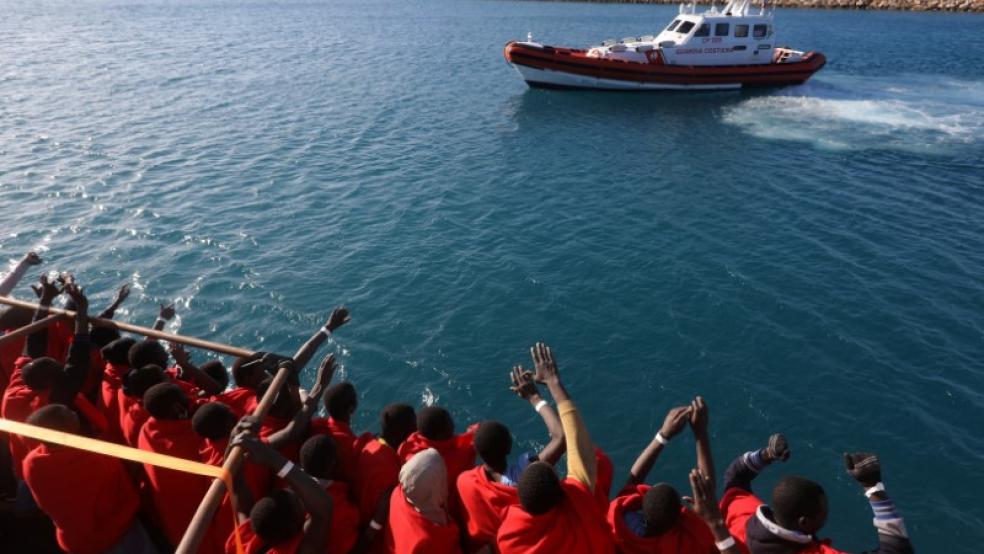LESBOS, Greece (Reuters) - The man in a red and white checked shirt gingerly waded through the water holding an infant. Seconds after shrugging off a life jacket, Syrian refugee Mustafa Mohammad embraced the first person he met in Greece.
A two-hour sea journey from the western shores of Turkey, this bamboo-fringed coastline on the northern Greek island of Lesbos has become the main gateway into the European Union for refugees fleeing conflict in Syria and the wider Middle East.Others on the inflatable white dinghy whooped and cheered as they hit land. Two men alighted and knelt on the pebble beach, their foreheads touching the stones in prayer. A woman wearing a hijab picked up a pebble and hurled it into the sea.Within one hour on Thursday, Reuters journalists on the island saw two boatloads of refugees landing on the Greek territory, one carrying roughly 40 Syrians, the other the same number of Afghans. They are among the tens of thousands who have entered Greece illegally since the beginning of the year, representing what the European Union has described as one of the biggest humanitarian crises since World War Two. "I don't care where I go, I'm just so glad to be out of Syria. We all deserve to live," said a 26-year-old man, traveling with his younger sister. A barber by profession, he would only give his first name, Issa. "My parents are still in Homs," he said, a war-ravaged Syrian city which has seen some of the fiercest fighting in the in that country's conflict. The U.N refugee agency, UNHCR, estimates that Greece has received more than 107,000 refugees and migrants this year, more than double its 43,500 intake of 2014.From several accounts of people now in reception centers on the island waiting for papers to move to other European countries, dinghies are the primary means of transport across a sea strait about 20 km between Turkey and Lesbos.HUNDREDS DAILYTestament to that is the dirt track between the northern Lesbos communities of Mithimna and Skala Sykaminias. It is strewn with debris from inflatable dinghies and life jackets left in piles along the shore. The dinghies are slashed when refugees reach land. In both of Thursday's cases, and within minutes, men in double cabin pick-ups arrived on the remote track to retrieve what could be salvaged; the expensive motors, and a wooden and fibreglass base used at the bottom of each dinghy.Observers say the flow of refugees reaches on average 250 daily. Some make their way to volunteers who make arrangements for them to be fed, and buses to reach the main city of the island, Mitilini, where they are taken to reception centers for identification.Others walk. Not knowing where they are going, the boatpeople take to the dusty road to reach the nearest community about 10 km away.Mustafa Mohammad is still elated, but looks confused. "Where do I go now?" he asked, before following the rest of the refugees kicking up dust as they walked up a mountain. (Reporting By Michele Kambas; Editing by Jeremy Gaunt and Andrew Heavens)Refugees cheer, pray, embrace strangers as they reach Greece

© Yannis Behrakis / Reuters



